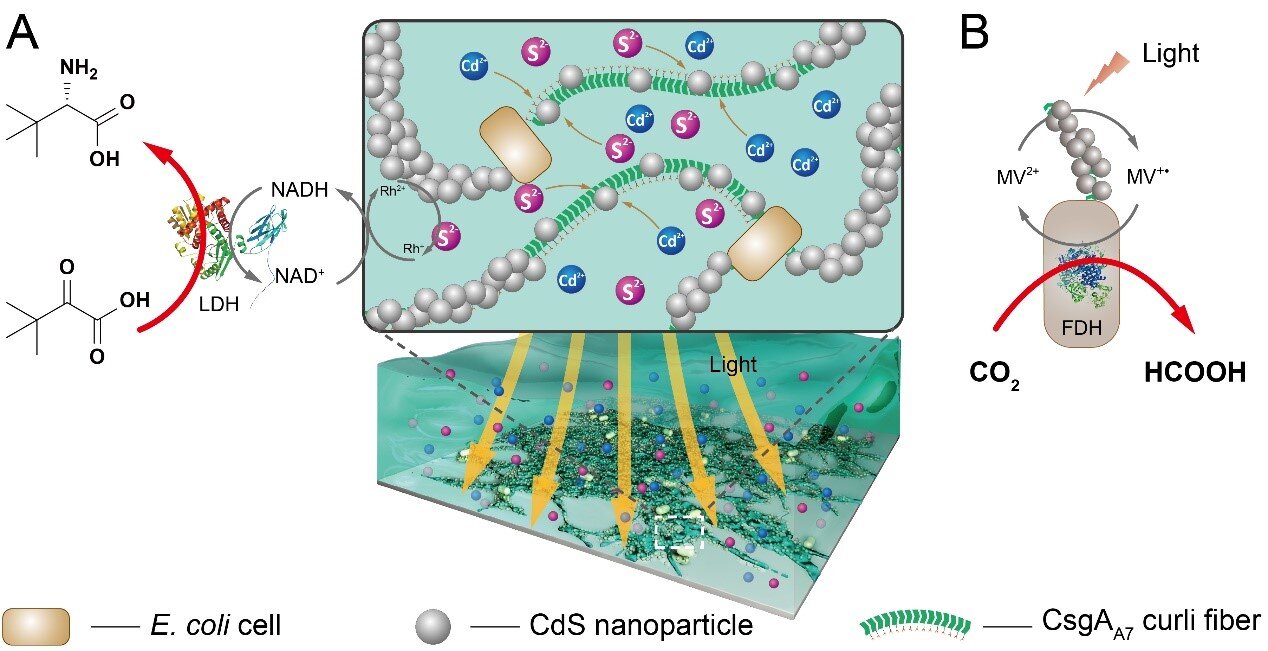Bacterial biofilms facilitate biocompatible bio-abiotic interfaces for semi-artificial photosynthesis
Date: 9.5.2022
Semi-artificial photosynthesis integrates the high selectivity of living biosystems and the broad-range light-harvesting of semi-conductive materials, which enables sustainable light-driven chemical production. The bio-abiotic interfaces between living cells and semiconductors are the key for semi-artificial photosynthesis.

Recently, a research team led by Prof. Zhong Chao from the Shenzhen Institute of Advanced Technology (SIAT) of the Chinese Academy of Sciences proposed the use of photocatalyst-mineralized biofilms as living bio-abiotic interfaces to implement diverse photocatalytic applications.
Biofilms are natural consortia embedded within a slimy extracellular matrix. Due to their superior resilience to external environmental stresses, biofilms have been adopted for the design of engineered living materials (ELMs) with applications in underwater adhesion, catalyst immobilization and medical therapy.
The researchers adopted E. coli biofilms with amyloid curli fibers. A7 peptides were first fused to curli subunit CsgA protein to create CsgAA7 nanofibers. It endowed biofilms with capability of in situ mineralization of CdS nanoparticles (NPs).
The photocatalyst-mineralized biofilms were obtained and directly used in photo-catalytic applications after cultivation.























